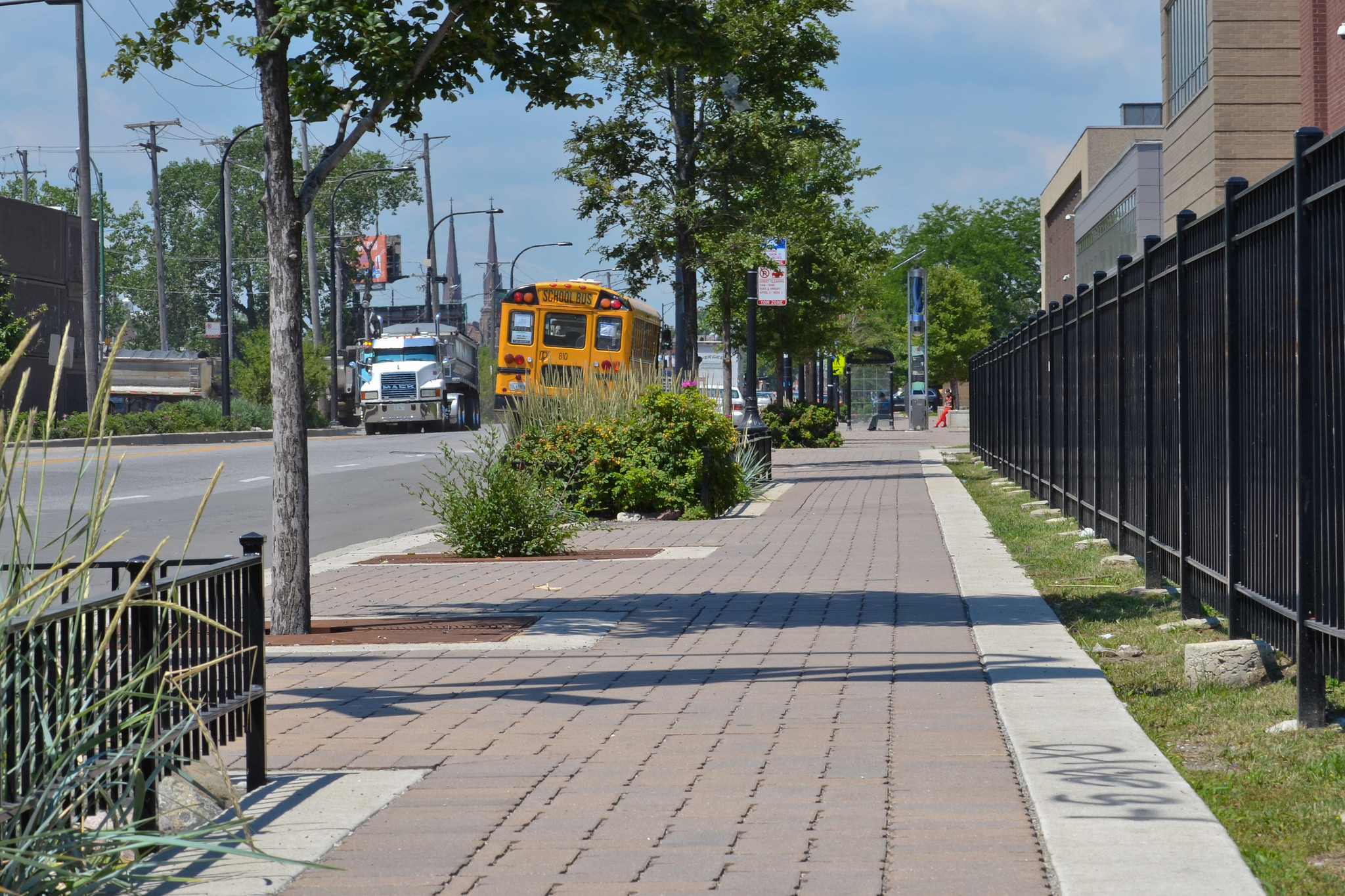Green Streets have become a more common feature of the urban landscape in cities and towns across the United States and abroad. And for good reason: they provide substantial value in community aesthetics, redevelopment, livability and environmental compliance. You may know from personal experience or previous blog posts that water resources and ecological engineers use stormwater controls like bioretention, permeable pavements, infiltration trenches and street trees in collaboration with landscape architects and urban designers to design and build “Green Streets” that should decrease the volume of stormwater and pollutants that leave the right-of-way.
But how well are these Green Streets working for stormwater control and treatment?
It is an important question because for many Green Streets projects the impetus is downstream water quality protection, watershed restoration or combined sewer overflow (CSO) reduction. There are two components to evaluating Green Street stormwater performance: (1) hydrology, which includes runoff volume and its rate of discharge and (2) water quality treatment or removal of pollutants transported in runoff.
Surprisingly, there are very few peer-reviewed research papers that have evaluated Green Streets on a stormwater control and treatment basis. There are a couple of factors related to the lack of available datasets.
One factor is the “newness” of the Green Streets and Green Infrastructure movement; there simply has not been sufficient time for researchers to find a project, develop a monitoring plan and protocol, obtain funds for the study, conduct the field study, evaluate the dataset, and finally report and publish the findings. The process is long. Another contributing factor is the difficulty in monitoring and instrumenting Green Street projects for research. These projects are located within the right-of-way among existing municipal stormwater and roadway infrastructure, which makes it very challenging to isolate the impact of a Green Street project.
Fortunately, some non-peer reviewed datasets are available and provide some insight on basic Green Street performance, but the study and evaluation is typically not as rigorous as those found in a peer-reviewed journal.
Several non-peer reviewed datasets are available from projects in Portland, OR and Seattle, WA where Green Streets have been used for more than 10 years for stormwater management and CSO reductions. For example, in Portland more than 1,000 bioretention and infiltration areas have been installed in the right-of-way (Kurtz, 2008). The general findings from monitoring of multiple retrofit sites around the city is that the total runoff volume released during a storm has been decreased by 50-90% and the rate of discharge or flowrate has been reduced by 70-90%. No direct water quality data was available for these sites, but indirectly we know that if the volume of stormwater is decreasing then fewer pollutants are being sent downstream. In Seattle, where one of the first Green Streets was built in 2001, field monitoring has shown that 99% of stormwater runoff has been eliminated since the project was implemented.
These results are excellent – both for downstream water quality protection and CSO reductions. But are they unique and can this type of performance be expected across the board for all Green Streets projects? The answer is probably not. The Pacific Northwest is a perfect place to use Green Streets. Rainfall patterns and storms in that ecoregion are characterized by low rainfall intensities and long durations. This means that smaller or undersized stormwater controls used for Green Streets are not overwhelmed and can be very effective at infiltrating and storing stormwater runoff during a storm. Ecoregions like the Southeast and North Carolina (where I live and work) may not be so fortunate. Here, storms tend to have a much higher rainfall intensity and shorter duration, which means a lot of above ground storage is needed to temporarily retain runoff for infiltration and treatment after the storm has passed.
By comparison, at a green street project in Wilmington, NC where permeable pavements and bioretention areas were constructed, runoff discharges were decreased by 28% and runoff volumes were decreased by about 50% for the average storm observed (Page et al., 2015). These findings are substantially less than those reported from Seattle and Portland, but still better than the pre-Green Street condition. At the Wilmington project, if we consider larger design storms (1” – 1.5”), runoff volumes were only decreased by about 30%. This tells us that the project’s effectiveness is decreasing as the storms get larger, which is not what engineers want to see. Larger storms transport a lot of energy downstream which degrades sensitive ecosystems and causes streambank erosion and instability.
So, how can Green Streets projects be more effective in ecoregions with shorter, high-intensity storms? More storage for runoff is need – both above and below the ground surface. This can be achieved with hybrid infiltration and detention systems, longer linear infiltration zones, or subsurface detention and treatment like a suspended pavement system. Space is limited in cities and within the right-of-way for stormwater controls, but with more targeted engineering decisions to incorporate additional storage, the effectiveness of the Green Streets projects can be greatly increased.
Jonathan Page is an Extension Engineer at North Carolina State University, where he specializes in water resources engineering and ecological restoration.
References
Kurtz, T. (2008) Managing Street Runoff with Green Streets. Low Impact Development for Urban Ecosystem and Habitat Protection: pp. 1-10.
Page, J. L., et al. “Hydrologic mitigation of impervious cover in the municipal right-of-way through innovative stormwater control measures.” J. Hydrol. 527 (2015): 923-932.
Center for Neighborhood Technology / CC BY-SA 2.0






Leave Your Comment